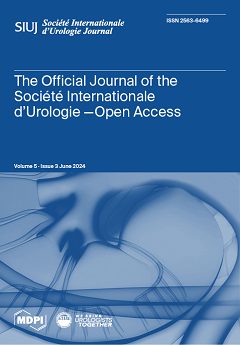Objectives: Benign prostatic hyperplasia is one of the most common urological diseases. Among these patients, the presence of detrusor underactivity or acontractility represents a challenging condition since no medical treatment is available. Our objective is to evaluate early term outcomes following transurethral
[...] Read more.
Objectives: Benign prostatic hyperplasia is one of the most common urological diseases. Among these patients, the presence of detrusor underactivity or acontractility represents a challenging condition since no medical treatment is available. Our objective is to evaluate early term outcomes following transurethral anatomical enucleation of the prostate with Tm:YAG support.
Methods: In a retrospective analysis of 115 patients who underwent this procedure between January 2019 and March 2022 due to lower urinary tract symptoms, 8 patients with urodynamic evidence of detrusor underactivity secondary to a non-neurogenic aetiology were identified. Detrusor underactivity was defined as a bladder contractility index of <100.
Results: Median age, prostate volume and bladder contractility index were 73.2 years, 78.5 cm
3 and 63.9, respectively. Median International Prostate Symptom Score/quality of life, Q
max and post-void residual volume were 15/3.5 points, 4.4 mL/s and 189 mL, respectively. Postoperatively, immediate catheter-removal success rate was 87.5% (7/8), at 2 months all patients were catheter-free and remained so at 1-year follow-up. Significant improvements for quality of life, Q
max and post-void residual volume were detected. Median postoperative International Prostate Symptom Score/Quality of life, Q
max and post-void residual volume were 7/2, 21.6 mL/s and 0 mL, respectively.
Conclusions: This surgical approach offers high catheter-free rates, significantly improves functional voiding parameters and increases patient satisfaction in patients with benign prostatic hyperplasia and concomitant detrusor underactivity. Therefore, it can be regarded as an effective approach for such patients.
Full article



